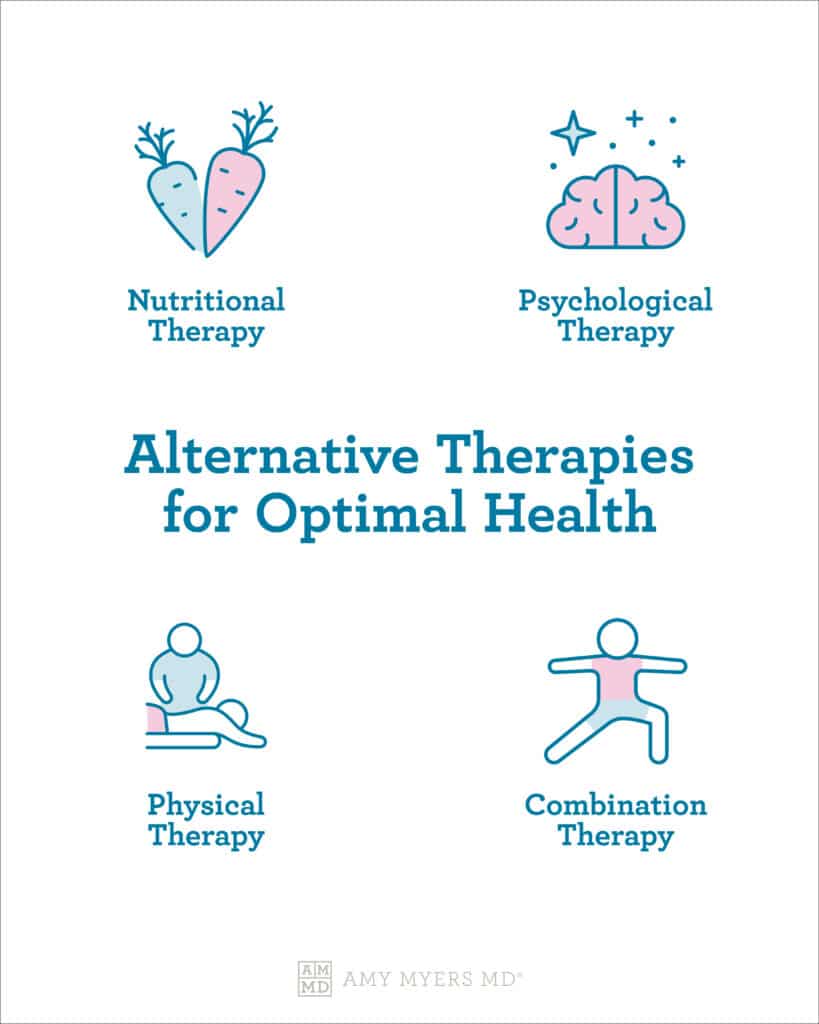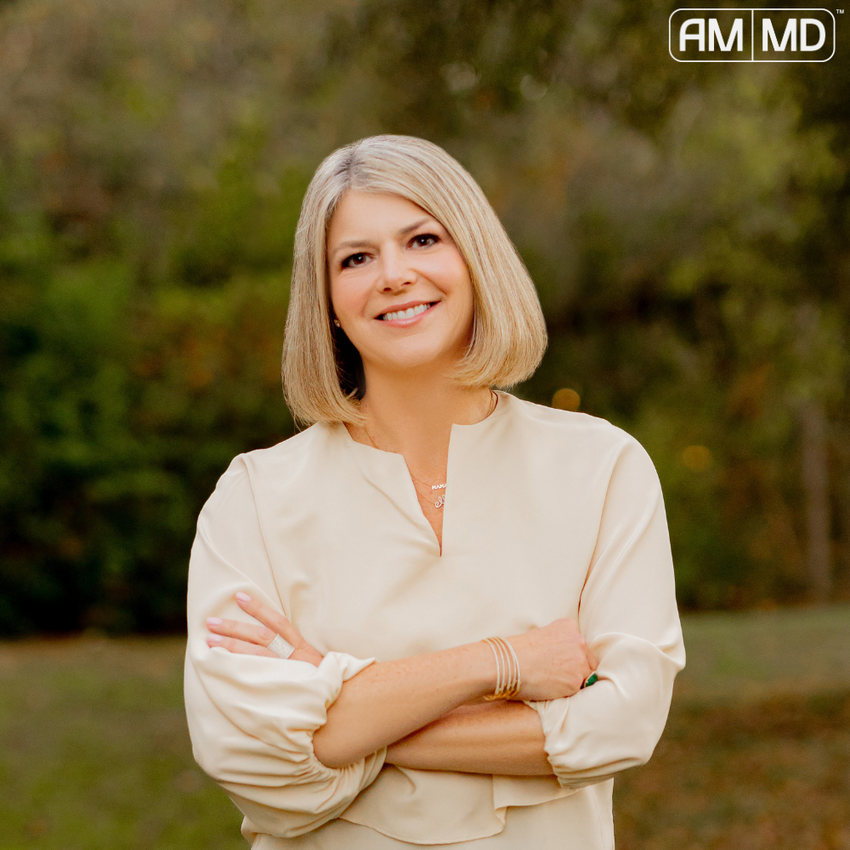An Alternative to Conventional Medicine
The term alternative therapy describes any form of medical treatment or healing that does not fall into conventional medicine practice.2 This makes functional medicine an alternative to conventional medical practices.
Conventional Medicine vs. Functional Medicine
Conventional medicine focuses on treating symptoms rather than getting to the root cause of them. Conventional medicine views people in terms of their disease, a one-size-fits-all model. It focuses on naming a disease and giving a pill for that disease. This practice is becoming increasingly true as conventional medicine becomes more specialized and more fractured. Conventional medicine views symptoms and diseases as separate entities within the body.
Functional medicine, often referred to as 21st century medicine, is a science-based method that offers an integrative approach to health. It examines how different systems in the body influence one another.. As a functional medicine doctor, I view the body as a whole and seek out why you have the illness instead of naming the disease and giving a pill.
More people are turning to alternative therapies because conventional medical treatments fail those with chronic illnesses and diseases. Let’s talk about what actually makes something an alternative therapy.
How Alternative Therapies Are Classified
Alternative therapies are classified based on their delivery methods. For example, adjusting your diet due to a food intolerance would be classified as nutritional therapy, which is one of four classifications of alternative therapies. You’ve likely heard of most or all of these categories because many have made their way into conventional healthcare. The other classifications of alternative therapies include psychological therapy, physical therapy, and combination therapy.
I’m going to tell you about the four classifications of alternative therapies and the different types of therapies under its umbrella.

#1 Nutritional Therapy
Unlike our ancestors, who ate a complete Paleo diet, our diet today is full of heavily processed foods filled with sodium, trans fats, and refined sugars. Because heavily processed foods are often low in nutritional value, this way of eating has led to malnourishment, the development of diabetes, and destroys the gut microbiome. Over time, this can lead to leaky gut and autoimmune disease.
Nutritional therapy uses food and herbs to prevent and reverse diseases that are common in today’s society. Specialty diets like gluten-free, Paleo, keto, and vegan are all considered to be types of nutrition therapy.
I recommend that everyone removes gluten and dairy from their diet. Gluten causes intestinal permeability because it triggers the release of zonulin, a protein that tells the tight injunctions in your gut to open up, creating leaky gut. Dairy causes inflammation in a large number of the world’s population, due to lactose intolerance or a sensitivity to casein and whey proteins found in cow’s dairy.
Taking supplements such as vitamins and minerals also fall under the nutritional therapy umbrella. Modern agriculture has increased food supply, yet it has also stripped the nutrients from the soil that grows our food in the process. This is called soil depletion.
#2 Psychological Alternative Therapies
Mental health plays a crucial role in overall health and well-being. In recent years, complementary alternative medicine has become increasingly popular as patients seek alternative approaches to traditional health care for managing disorders and promoting relaxation. These therapies focus on the mind-body connection to support healing and enhance emotional resilience.
Meditation and Relaxation Techniques
Meditation is a recommended practice in complementary alternative therapies that enhances mental health by reducing stress and anxiety. It involves guided breathing exercises and mindfulness techniques. Studies have shown the benefits of relaxation practices in managing chronic pain, improving focus, and promoting emotional stability.
For individuals seeking to support their body's recovery and energy levels alongside these relaxation practices, incorporating a high-quality paleo protein powder can be an excellent addition to a wellness routine.
Cognitive Behavioral Therapy (CBT)
CBT is an evidence-based treatment that helps people reframe negative thought patterns. It is often used for anxiety, depression, and stress-related conditions, providing a structured way to address emotional challenges.
Hypnosis and Guided Techniques
Hypnosis and other guided techniques are forms of complementary alternative therapies that help patients overcome trauma, phobias, and stress. These methods focus on relaxation and accessing the subconscious mind to promote self-awareness and positive change.
Yoga for Mind and Body
Yoga is a complementary therapy combining physical movement, breathing exercises, and meditation to foster both mental health and physical well-being. Its holistic approaches have been widely researched for their ability to reduce stress, enhance flexibility, and support overall health.
To further enhance the benefits of yoga for joint health and skin elasticity, many individuals turn to collagen powder as part of their daily regimen.
The Role of Integrative Medicine
Integrative medicine combines conventional medical treatments with complementary medicine practices to provide a rounded approach to healthcare. Clinics that focus on integrative health offer patients the benefits of traditional and alternative therapies to promote long-term wellness.
Integrative medicine practices often recommend incorporating natural health supplements to address nutritional gaps and support overall health.
#3 Physical Alternative Therapies
In addition to massages, therapies such as acupuncture and chiropractic care are widely accepted as effective medical treatments. Physical alternative therapies have long been utilized to address physical disorders and improve the quality of life in a holistic way. These practices emphasize the connection between physical health and emotional well-being, using natural and non-invasive methods.
Acupuncture
A cornerstone practice in traditional medical systems, acupuncture involves inserting thin needles into specific points on the body to promote medical healing and energy flow. It is widely used for cancer pain management, stress relief, and as a complementary treatment in cancer care.
Massage Therapy
Massage therapy is one of the most well-known complementary therapies. It offers numerous benefits, including stress reduction, improved circulation, and pain relief. Regular massage sessions can help patients recover from injuries and improve overall healthcare outcomes.
Chiropractic Care
Chiropractic care focuses on spinal alignment to enhance nervous system function and treat musculoskeletal medical issues. This alternative treatment is popular among patients with back pain, headaches, and posture-related issues.
Gua Sha and Scraping Therapy
Scraping therapy, or Gua Sha, is a traditional practice that uses tools to scrape the skin gently. It improves blood flow, reduces inflammation, and supports faster recovery from muscle tension.5 Foam rollers and similar tools offer an accessible way to enjoy its benefits at home.
Red-Light Therapy
Red-light therapy (RLT) is a therapeutic technique that exposes you to low levels of infrared light. Instead of traditional saunas that rely on humidity to heat up the room around you, infrared saunas emit wavelengths that you immediately absorb in your skin. Localized heat sent right to the source means tolerable temperatures, a quicker, deeper sweat, and a number of health benefits such as:
- Detoxification
- Relaxation
- Pain relief
- Weight loss
- Improved circulation
- Skin purification
I have a red-light sauna in my home from Sunlighten Saunas that I use daily. It is so relaxing and helps me get my daily sweat without much effort at all. If buying your own red-light sauna isn’t a practical option, more and more wellness clinics and sports medicine offices offer red-light therapy.
Cryotherapy
Cryotherapy exposes the body to extreme cold temperatures for short periods, offering benefits like reduced inflammation, faster recovery, and stress relief. 4 Many patients use this therapy to complement traditional cancer treatments or alleviate chronic pain. In the clinic setting, integrative health practitioners use cryotherapy to aid cancer treatment and improve patient outcomes.
Float Tub Therapy
Float tub therapy involves soaking in magnesium-rich salt baths to support muscle recovery and promote medical relaxation. This complementary alternative is ideal for individuals seeking stress relief and joint pain alleviation.
Ice Bath Therapy
Ice bath therapy is a cool wellness trend that involves plunging in cold water that’s roughly 20 to 50 degrees fahrenheit for up to 2 minutes. There are many versions of this type of therapy, including jumping into a cold tub and getting right out. The benefit is that it stimulates the lymphatic system and adrenal glands.
Ice bath therapy has many other benefits. It supports a healthy immune system, boosts metabolism, facilitates a healthy inflammatory response, and improves your mood. It does this by boosting the release of happy hormones such as oxytocin, endorphins, serotonin, and dopamine.6
Since ice bath therapy is becoming so popular, specialized ice bath tubs are being sold everywhere. They can cost around $5,000 but a high quality tub such as Plunge is so worth it! Or instead of buying a special tub, you can fill your regular bathtub with cold water and ice to reap the benefits.
#4 Combination Therapy
Combination therapy involves combining one or more of the therapies mentioned above. Most of the time, physical therapies are considered combination therapies because they can work to heal your body and mind simultaneously.
Examples of a combination of physical and psychological therapies include yoga which is physical therapy combined with psychological therapy, dance therapy, and art therapy.
Are Alternative Therapies Right for You?
More people are seeking out alternatives to conventional medicine. As a functional medicine doctor and autoimmune patient, I know all too well the pitfalls of conventional medicine. Conventional medicine failed me and it’s my mission to not have it fail you, too.
It is encouraging to see so many people wanting to take back their health and try alternative therapies as a way of achieving optimal health. For added support, The Myers Way® Autoimmune Kit is the perfect combination of supplements for anyone looking to support optimal immune system function and balance.
These alternative therapies have many benefits and I recommend trying them out and determining what works for you. The best part is that many of them can be done in your own home without expensive equipment or the need to go to a specialized facility. If you try any of these alternative therapies comment below and let me know how it worked for you!









Leave a Comment